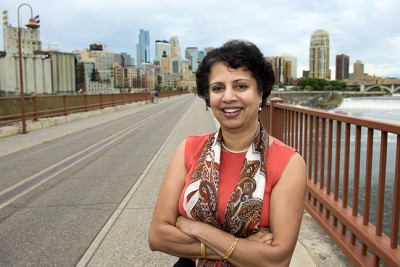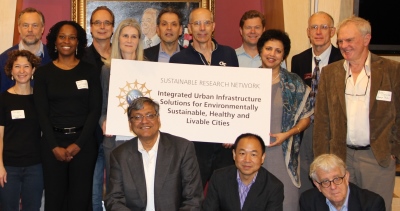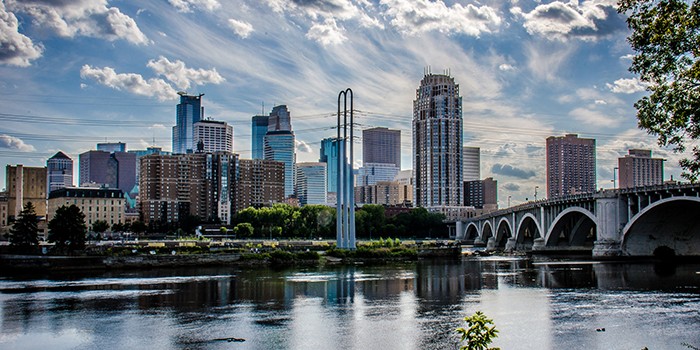All posts by msadmin
News
Minnesota and Georgia Tech Collaborate on Pollution Threat to Taj Mahal
A joint study by the University of Minnesota and Georgia Institute of Technology addresses the high level of particulate matter responsible for masking the white marble sheen of the Taj Mahal.
Read the articles:
- Times of India – Large-scale open burning of garbage damaging Taj: US study
- Wall Street Journal – How Trash Is Adding to Delhi’s Air Pollution Problems
- Times of India – Police lathicharge on colleagues’ kin for protesting against burning of garbage
News
Columbia Students and Faculty Collaborate with Detroit

Written by Amy Motzny, Nandan Shetty and Robert Elliott of Columbia University
The Columbia University Urban Ecology Studio is an advanced design course for graduate students in architecture, engineering, and urban planning focusing on urban development and its ecological impacts. The class is separated into several multidisciplinary teams that are each tasked to produce an integrated design for a client (either an external organization or community stakeholders). As these teams reconcile their different ideas, strengths, and ways of thinking, faculty in both the School of Engineering and Applied Science and the Graduate School of Architecture, Planning and Preservation work to mediate their design process; raising questions, helping members to understand each other, offering suggestions, and applying sensibilities.
This year, the Urban Ecology Studio has partnered with the Detroit Collaborative Design Center (DCDC), an architecture and urban design research unit at the University of Detroit Mercy. In 2011, DCDC produced an extensive greenway development proposal for day lighting Detroit’s historic Bloody Run Creek. This project aims to transform Detroit’s East side neighborhoods by providing a major ecological public landscape that improves water quality and mitigates storm water runoff while serving as a catalyst for economic development. Since 2011, the Bloody Run Creek proposal has gained significant support in the city and DCDC is interested in the physical development of site-specific projects across the study area. To assist with this effort, the student teams in the Urban Ecology Studio are expanding on the 2011 planning proposal. Teams are experimenting with design and programmatic intentions across scales, culminating in architectural or engineering design proposals and an overall infrastructure network concept that is specific to the Bloody Run study area but relevant to the broader Detroit geography. They will explore a range of distributed water, waste, and energy infrastructure ideas fundamentally related to redeveloping urban infrastructure and social fabric.
Urban Ecology Studio, students and faculty traveled to Detroit to meet with the DCDC and to visit the Bloody Run Creek study area, which encompasses more than 3,500 acres and is located east of Detroit’s central business district and rapidly developing Midtown neighborhood. Much of the study area resembles the fabric of the city at large, comprised of a former community of dense, single-family residential homes and industrial facilities, many of which are vacant or abandoned today. During the site visit, students had an opportunity to explore several relics of this once thriving boomtown, including the ruins of the 3 million square-foot factory complex of the Packard Automotive Plant and the vacant residential block turned community art project at Heidelberg Street. Despite the prevalence of vacancy and loss, the Bloody Creek study area is also home to several cultural, natural, and community assets, including the historic Eastern Market, the Dequindre Cut Greenway, the Detroit Riverfront, and Elmwood Cemetery, an Olmstedian-inspired landscape that contains the only surface remnants of Bloody Run Creek today.
Apart from site visits and meeting with the DCDC client, students also exchanged ideas and approaches with an Urban Design Studio at the University of Michigan also involved with Detroit redevelopment. While undoubtedly a city of contradictions, the studio visit to Detroit has left students realistically hopeful about the future. Exposure to the complexities of the city has inspired them to consider sustainable strategies for development that value the opportunities present in Detroit’s two most precious resources: available land and dynamic people. Projects will investigate everything from green infrastructure to solar energy and food production.
The Urban Ecology Studio is co-taught each year by SRN faculty Patricia Culligan and Richard Plunz. Professors Culligan and Plunz are currently leading efforts to explore the role of green infrastructure in urban stormwater management and community development in New York City’s Bronx River Sewershed. They decided to focus this year’s Studio on stormwater management and community development ideas for Detroit, in order to begin the integration of new ideas and strategies for distributed infrastructure systems across the SRN testbeds in New York City and Detroit.
News
University of Michigan Hosts Workshop to Reshape Urban Food, Energy, and Water Flows

Approximately fifty researchers and stakeholders participated in an NSF-funded workshop held in Ann Arbor on October 5-6. Disciplines represented range from geography to engineering to architecture and computer science. The workshop focused on the prospects for ‘scaling-up’ urban agriculture to mitigate food, energy, and water impacts. Cities have become dominant demand drivers in global food-energy-water (FEW) cycles.
Outcomes from the workshop include a white paper to help guide NSF funding in this area and a journal article. The workshop results will also be used by the SRN in this exciting new research area.
SRN member Joshua Newell, University of Michigan (UM), was the principal investigator and Anu Ramaswami was a Co-PI of this initiative. Other Co-PIs included Glen Daigger (UM, Engineering), Nancy Love (UM, Engineering), and Nathan McClintock (Portland State, Urban Planning).
For more information about the workshop, please contact jpnewell@umich.edu.
For more information about urban sustainability initiative at the UM, see http://urbansustainability.
News
A better future through “smart cities” research

At the University of Minnesota researchers are teaming up with city planners, nonprofit leaders and industry professionals to form solutions that tackle these emerging challenges and prepare communities for the future.
News
Tech, NSF collaborate to promote sustainability

Professors Armistead Russell and Nisha Botchwey, will lead Georgia Tech’s involvement in the Sustainability Research Network being funded by the National Science Foundation.
News
Reimagining Cities

If ever a project could be held up as a picture-perfect example of the word “interdisciplinary,” this is it.
The U of M’s Anu Ramaswami is directing a vast new network of academics, scientists, industry leaders, and policy partners studying ways to make cities more environmentally sustainable and more tangibly “livable” in ways that advance human health and well-being. Read the full article.
News
News Roundup – Week Two
“Helping Cities Navigate a Climate-Changed Future”
InsideClimate News
August 21, 2015
“Nine universities, backed by NSF grant, research city development in India and USA”
imc, IOT M2M Council
August 18, 2015
News
Helping Cities Navigate a Climate-Changed Future

A Q&A with Anu Ramaswami, an urban sustainability expert at the University of Minnesota, about a new program to make cities sustainable.
Read the full interview on InsideClimate News.
News
IonE Fellow to Lead Global Project on Sustainable Cities

What is a healthy city? How does society weigh the conveniences of transportation, readily available water and electricity, and placement of that new shopping center against the environmental impacts of those assets?
With more than half the world’s population living in cities, building resilient and healthy communities has never been more important. Estimates indicate that by 2050, three billion more people — two-thirds of the world’s population — will inhabit urban areas, increasing pressure on water, energy and land resources.
University of Minnesota researchers — including several Institute on the Environment resident fellows — are part of a global team that has received a $12 million award from the National Science Foundation to bring together a unique network of scientists, industry leaders and policy partners committed to building better cities of the future.
“We have to think in new ways about a city’s physical infrastructure to develop sustainable solutions,” Anu Ramaswami, professor in the Humphrey School of Public Affairs, IonE resident fellow and lead investigator and director for the project, said in a press release. “Understanding that these systems are interconnected serves as a foundation for this work. For example, urban farms wouldn’t work very well without thinking about water, energy and transportation infrastructure, as well as people, markets and policies.”
In this video, Ramaswami and several other members of the project team explain how the project will be implemented.
IonE resident fellows Matteo Convertino, assistant professor in the School of Public Health; Julian Marshall and Paige Novak, professors in the College of Science and Engineering; and Elizabeth Wilson, associate professor in the Humphrey School, are co-investigators on the project.
IonE’s nearly 70 resident fellows — faculty with appointments throughout the University of Minnesota system who come together here to share ideas, inspiration and innovation across disciplinary boundaries — are among the shining stars of IonE’s signature approach to addressing global grand challenges.
This article was originally posted by the Institute on the Environment.
News
CSU Joins Network to Research Sustainable, Livable Cities
Colorado State University researchers will be part of a unique network of scientists, industry leaders and policy partners committed to building better cities of the future.
The consortium, supported by a $12 million Sustainability Research Network award from the National Science Foundation and led by the University of Minnesota, Columbia University and the Georgia Institute of Technology, includes nine universities, major metropolitan areas in the U.S. and India, infrastructure firms and policy groups, all focused on creating cities that are highly functional, promote the health of residents and the environment, and have that intangible “vibe” called livability that makes cities desirable places to live and work.
SRN_livable_cityThe network is the first of its size to focus on ways to reimagine our infrastructure — our energy grids, road networks, green spaces, and food and water systems.
Daniel Zimmerle, senior research associate at Colorado State, will bring his expertise in distributed energy grids to the project. He has been instrumental in the research that has created Fort ZED, the net-zero energy district in Fort Collins and is currently researching micro-grid technology designed to bring energy to rural villages in Rwanda.
“We have to think in new ways about a city’s physical infrastructure to develop sustainable solutions,” said Anu Ramaswami of the Humphrey School of Public Affairs at the University of Minnesota, who is the lead investigator and director for the project. “Understanding that these systems are interconnected serves as a foundation for this work. For example, urban farms wouldn’t work very well without thinking about water, energy, and transportation infrastructure, as well as people, markets and policies.”
Interconnected energy systems
The CSU team will study energy systems interconnected with transportation, water and other systems. The team will utilize data from multiple communities, including Fort Collins, to create simulation models for innovating new methods of optimizing systems.
“Many energy problems have interesting interconnections with social systems or other technical systems. This center will bring together all of the necessary expertise to truly study these interconnections,” said Zimmerle.
Patricia Culligan of Columbia University and Armistead Russell from Georgia Technology are co-directors of the project.
Estimates indicate that by 2050, two-thirds of the world’s population will live in urban areas. Such growth will exert tremendous pressure on water, energy, and land resources, creating traffic congestion, air pollution, and urban inequity that already affects the health of millions of urban residents today. A majority of the infrastructure required to accommodate that future growth has yet to be built, or will need to be rehabilitated from existing systems.
Until now, development trends have resulted in very large infrastructure systems — large power grids, large roadway networks, complex systems that pipe water from distant rivers, and supply food from faraway states and countries. Emerging trends suggest cities may be better off building more local systems — urban farms, local solar generation, bike share systems, and more. This network will try to identify the best mix of local and large to achieve urban sustainability, health and livability goals, by examining infrastructure in diverse cities in the US and India. The team will also explore the public attitudes and policies that can help achieve such urban transitions.
Three themes
The work of the network is organized into three themes.
Theme 1 will develop science-based methods to track the environmental sustainability, health and livability of cities. The various teams will measure the water and energy footprints of cities, the emotional well-being of people in-the-moment as they experience the city, the influence of urban design on air pollution and health, the impact of cities on natural ecosystems, and modeling extreme climate events such as extreme heat and flooding, that impact the livability of cities.
Theme 2 will identify the innovations needed in infrastructure design and in our social institutions to advance environment, health and livability outcomes in cities. In this thematic area, researchers will draw upon new technologies being incubated in university laboratories, as well as infrastructure innovations being piloted in real-world test-beds in our partner cities. Each university in this network is partnering with their local city to explore innovative infrastructure solutions – the network’s test-beds span energy, water, transportation, green infrastructure and food system innovations being piloted in cities in the US and in India.
In Theme 3 the new knowledge created in Themes 1 and 2 will be used to model various policy and technology scenarios in diverse world cities – ranging from small fast-growing cities like Fort Collins to shrinking cities like Detroit, from stable cities with aging infrastructure cities like New York and Minneapolis to young emerging cites in India trying to leap-frog into next generation infrastructure systems.
Working with diverse cities provides rich learning experiences to students, to faculty and to policymakers, as they compare and contrast infrastructure solutions on the ground.
One strength of this network is that each of the nine universities – University of Minnesota, Columbia University, Georgia Tech, Colorado State University, Florida State University, Indian Institute of Technology-Madras, Ohio State University, University of Michigan, and University of Texas-Austin — is working with its local city, as well as with industry partners such as Ecolab, Xcel Energy, and ICF International. In addition, the network’s policy partners such as ICLEI USA, the National League of Cities and the International City Managers Association bring immense capacity to disseminate the findings of the network to more than 29,000 communities in the U.S. and globally.
For more information and a complete list of network partners, visit sustainablehealthycities.org.
– Kate Jeracki
This article was originally posted by Colorado State University.




